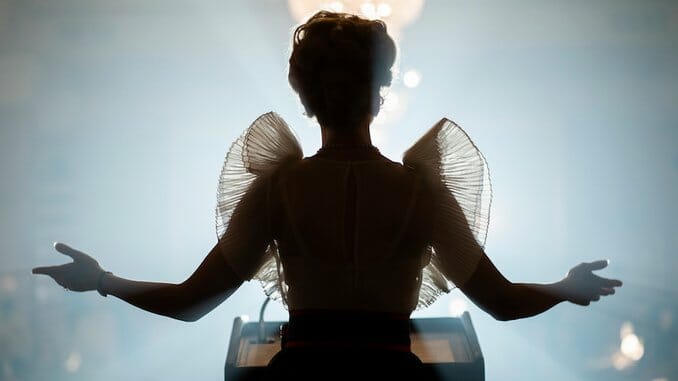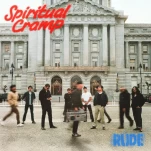The Mrs. America Finale Quietly Concluded One of 2020’s Best Shows
Photo Courtesy of FX
First of all, j’accuse TV watchers! Why haven’t more people been talking about Mrs. America? (Non-spoiler review here). The FX series, airing on Hulu (confusing, I know) just ended its nine episode run, exploring the rise of the Moral Majority through the context of the fight to ratify the Equal Rights Amendment in the 1970s. Despite its hard and frustrating truths, Mrs. America was never a downer series. It never felt like TV vegetables, nor did it feel like an overly-glossy or imbalanced portrayal of the women at its core. Perhaps that was aggravating to some—that the likes of Phyllis Schlafly were not made into caricatures. But in Dahvi Waller’s series, nuance is the thing. Phyllis played the game in the support of men, and she ultimately got played by them. They would never support her back, something she found out far too late.
One of the show’s best moments was in the episode “Houston,” where Bella Abzug confronts a small group of Eagle Forum faithful after they declare that they don’t want to be “working girls.” She asks them if Phyllis taught them how to write press releases and balance budgets and other tasks that kept their group afloat. Defiantly they answered yes, “of course.” “Then I’m sorry, but you’re working girls,” she says. Because ultimately, after taking away the cloud of fervor over feeling “attacked” by a demonized “other,” Phyllis and her ilk actually wanted the same thing the pro-ERA women wanted: freedom to do whatever they wanted, without labels or judgement.
Mrs. America was never one-sided in any issue, though. There were problems within the liberal camp as well. The issues over which they were divided were certainly different than the Eagle Forum, but egos clashing with political cachet were still constant. The pro-ERA fought valiantly, but as of 2020 that fight continues. With the election of Reagan, which happens in this show’s finale, Bella, Gloria, and their group lost their voice in D.C. And the seeds that were planted by the likes of Phyllis and the Eagle Forum—aligning God with conservative values, focusing on emotional issues like gay rights and abortion, creating “alternative facts” to bolster their cause—only grew. As the final interstitials tell us, the ERA battle was one of the key issues that caused our current deep divide between Democrats and Republicans, and the tactics employed then are still at use today.
But as Mrs. America showed, time and time again, the divide among everyday people is rarely so intensely drawn. Alice began to question some of the Eagle Forum’s more radical stances (especially as it bled over into racist ideology) as she found humanity in the work being done by pro-ERA women. But there were examples on the left, too, of wanting a more traditional home life. In another interesting scene, Gloria has to sell Ms. magazine and says she hopes it doesn’t get turned into another McCall’s. But later, we see her reading McCall’s at the hair salon (where she and Betty were, notably, getting freshly highlighted and styled). Few things are as black and white as rhetoric would have us believe. What Mrs. America did so well was show the internal struggles of each of its characters. The point was not the choices they ultimately made—the point was having a choice.
-

-

-

-

-

-

-

-

-

-

-

-

-

-

-

-

-

-

-

-

-

-

-

-

-

-

-

-

-

-

-

-

-

-

-

-

-

-

-

-








































